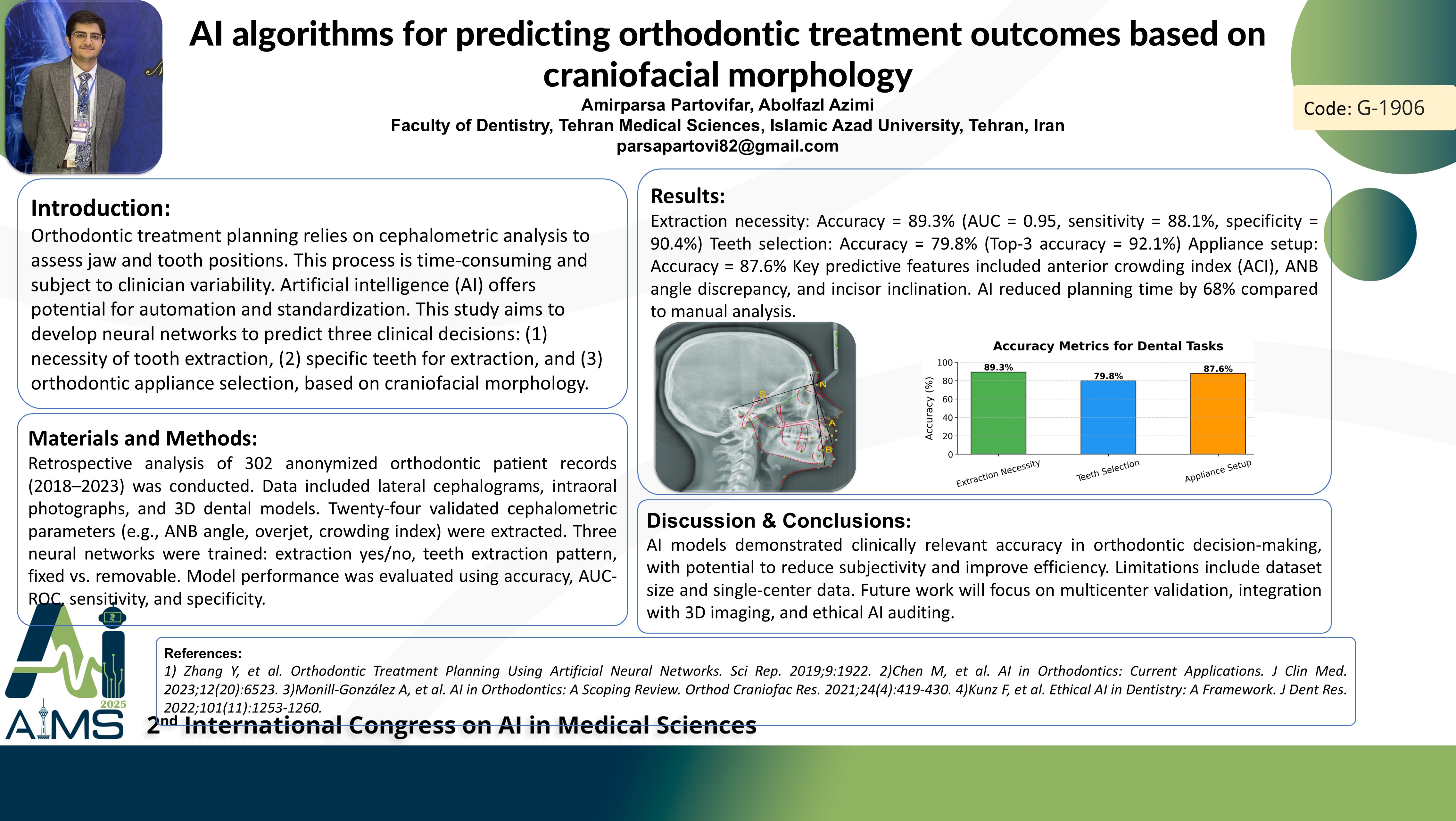الگوریتمهای هوش مصنوعی برای پیشبینی نتایج درمان ارتودنسی بر اساس شکل کرانیوفسیال
کد: G-1906
نویسندگان: Amirparsa Partovifar * ℗, Abolfazl Azimi
زمان بندی: زمان بندی نشده!
برچسب: سیستم های تصمیم یار بالینی
دانلود: دانلود پوستر
خلاصه مقاله:
خلاصه مقاله
Background and Aims: Orthodontic treatment planning relies on cephalometric analysis (X-ray measurements) to assess jaw and tooth positions. This process is time-consuming and subject to clinician variability. Artificial intelligence (AI) offers potential for automation and standardization. This study aims to develop neural networks to predict three clinical decisions: (1) necessity of tooth extraction, (2) specific teeth for extraction, and (3) orthodontic appliance selection, based on craniofacial morphology. Methods: Retrospective analysis of 302 anonymized orthodontic patient records (2018–2023) was conducted. Data included lateral cephalograms, intraoral photographs, and 3D dental models. Twenty-four validated cephalometric parameters (e.g., ANB angle, overjet, crowding index) were extracted. Three neural networks (multilayer perceptrons) were trained: Binary classification (extraction yes/no) Multi-class classification (teeth extraction pattern) Appliance selection (fixed vs. removable) Data were partitioned into training (70%), validation (15%), and test sets (15%). Missing data (5%) were imputed via k-nearest neighbors. Model performance was evaluated using accuracy, AUC-ROC, sensitivity, and specificity. Results: Extraction necessity: Accuracy = 89.3% (AUC = 0.95, sensitivity = 88.1%, specificity = 90.4%) Teeth selection: Accuracy = 79.8% (Top-3 accuracy = 92.1%) Appliance setup: Accuracy = 87.6% Key predictive features included anterior crowding index (ACI), ANB angle discrepancy, and incisor inclination. AI reduced planning time by 68% compared to manual analysis. Conclusion: AI models demonstrated clinically relevant accuracy in orthodontic decision-making, with potential to reduce subjectivity and improve efficiency. Limitations include dataset size and single-center data. Future work will focus on multicenter validation, integration with 3D imaging, and ethical AI auditing.
کلمات کلیدی
Artificial Intelligence, Orthodontics, Teeth Alignment, Neural
